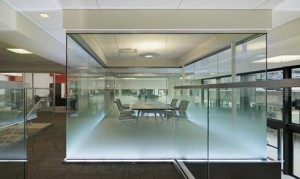 Research has repeatedly shown that the workplace itself can have a significant impact upon workers’ happiness and performance, affecting everything from productivity and morale to absenteeism and turnover. Therefore, working with an office design company to address issues with your office space planning layout can be well worth the investment.
Research has repeatedly shown that the workplace itself can have a significant impact upon workers’ happiness and performance, affecting everything from productivity and morale to absenteeism and turnover. Therefore, working with an office design company to address issues with your office space planning layout can be well worth the investment.
With that being said, many companies do not have the luxury of spending vast amounts of money on their office space planning and design, which begs the question: Can successful office space planning be achieved on a budget? Here are some ways in which the cost can be kept down, without sacrificing quality.
The Open Plan Option
One of the best ways to save money on your office space planning is to opt for an open plan design, or at least include large open plan areas. Doing so cuts down on the number of fixed partitions needed, saving space in the process. This has a knock-on effect, because the amount of space you actually need will be reduced.
In addition to reduced real estate costs, other open plan benefits include the ability to modify the space easily and improvements to employee collaboration. With that said, the open plan is not for everyone and a study by IPSOS found that the 11 percent of workers who were most happy and most engaged had access to greater privacy.
Nevertheless, the open plan is the dominant design in the west, accounting for around 70 percent of all offices, according to the International Facilities Management Association. Moreover, by having an open plan office, with smaller private areas, you can enjoy the benefits while minimizing the negatives.
Putting the Essentials First
In recent years, much has been made of the likes of Uber including sleeping pods and Google including slides in their office designs. However, when operating on a budget, the focus should always be on getting the essentials right. People need comfortable work areas, social spaces and natural light far more than they need novelty items.
Although comfort and function are important considerations, it is generally okay to opt for classic furniture. After all, this can always be upgraded later. Furthermore, you should consider the nature of your business and think about which elements are necessary. Do you need so many meeting rooms? Do you even need a reception?
“Doing away with reception areas is a trend we’re increasingly seeing,” Chris Booth, managing director for the fit-out company Overbury, told Forbes. “If client visits are infrequent, giving away expensive rental space for that purpose is inefficient. If you’ve got clients coming in all the time, maybe you need one; if not, is it essential?”
Flexibility and Remote Work
Another great way to save money and ensure your space planning is delivered on-budget is to prioritize flexibility and try to include areas that have multiple functions. For example, when meeting rooms are not in use, could they double as quiet working spaces? Thinking in terms of flexibility also offers a chance to get really creative.
A great example of creative flexible thinking can be seen in the Yodle, Inc. company headquarters in New York. As part of their office design, they have a very wide flight of stairs. As well as their traditional function of allowing people to move between floors, the stairs are a designated social space, allowing for workplace collaboration.
Finally, while on the subject of flexibility, it may be worth some companies embracing the idea of remote working in order to save space and revitalize the workforce. Contrary to classic fears, Gallup’s State of the Global Workplace report claims that employees who work remotely on occasion are the happiest and most engaged of all.
Guest Author Bio:
Reno is a founder and director of a leading exhibition and office design company Enigma Visual Solutions, specializing in retail designs, interiors, graphic productions, signage systems, office space planning, event branding, conference set design and much more. He specializes in experiential marketing and event productions. He enjoys sharing his thoughts on upcoming marketing ideas and design trends. Feel free to follow him on twitter.
